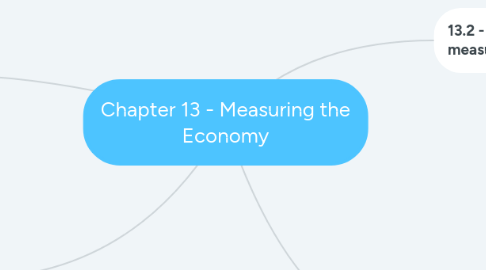
1. 13.4 - What does the inflation rate reveal about an economies health?
1.1. Key Point 1 - Tracking inflation: Economists at the BLS track changes in the cost of living using what is known as the consumer price index.
1.1.1. Price index - measures the average change in price of a type of good over time
1.2. Key Point 2 - Adjusting for inflation nominal vs. real cost of living
1.2.1. Nominal - cost in current dollars of all the basic goods and services needed by the average consumer
1.2.2. Real - cost in constant dollars of all the basic goods and services needed by the average consumer
1.3. Key Point 3 - The BLS relies on the consumer price index to estimate the level of inflation in the United States each month. However, critics point to several biases that may distort the CPI, making the reported inflation rate less than accurate
1.4. Key Point 4 - Costs of inflation: although a low inflation rate may be good. even the slightest bit of inflation has economic costs.
2. 13.5 - How does the business cycle relate to economic health?
3. 13.2 - How do economists measure the size of an economy?
3.1. Key Point 1 - Economists look at 2 different points when looking at an economy, microeconomics and macroeconomics.
3.2. Key Point 2 - Main measure for size of an economy is GDP.
3.2.1. GDP - the market value of all final goods and services produced within a country during a given period of time.
3.3. Key Point 3 - Inflation: Nominal GDP vs. Real GDP
3.3.1. Nominal GDP - measures the output of an economy valued at today's prices, or in current dollars.
3.3.1.1. Current Dollars - reflects the purchasing power of the dollars in the year they are spent.
3.3.2. Real GDP - measures the output of an economy not in current dollars, but in constant dollars.
3.3.2.1. Constant Dollars - fixed at a rate that was current in a specified base year.
